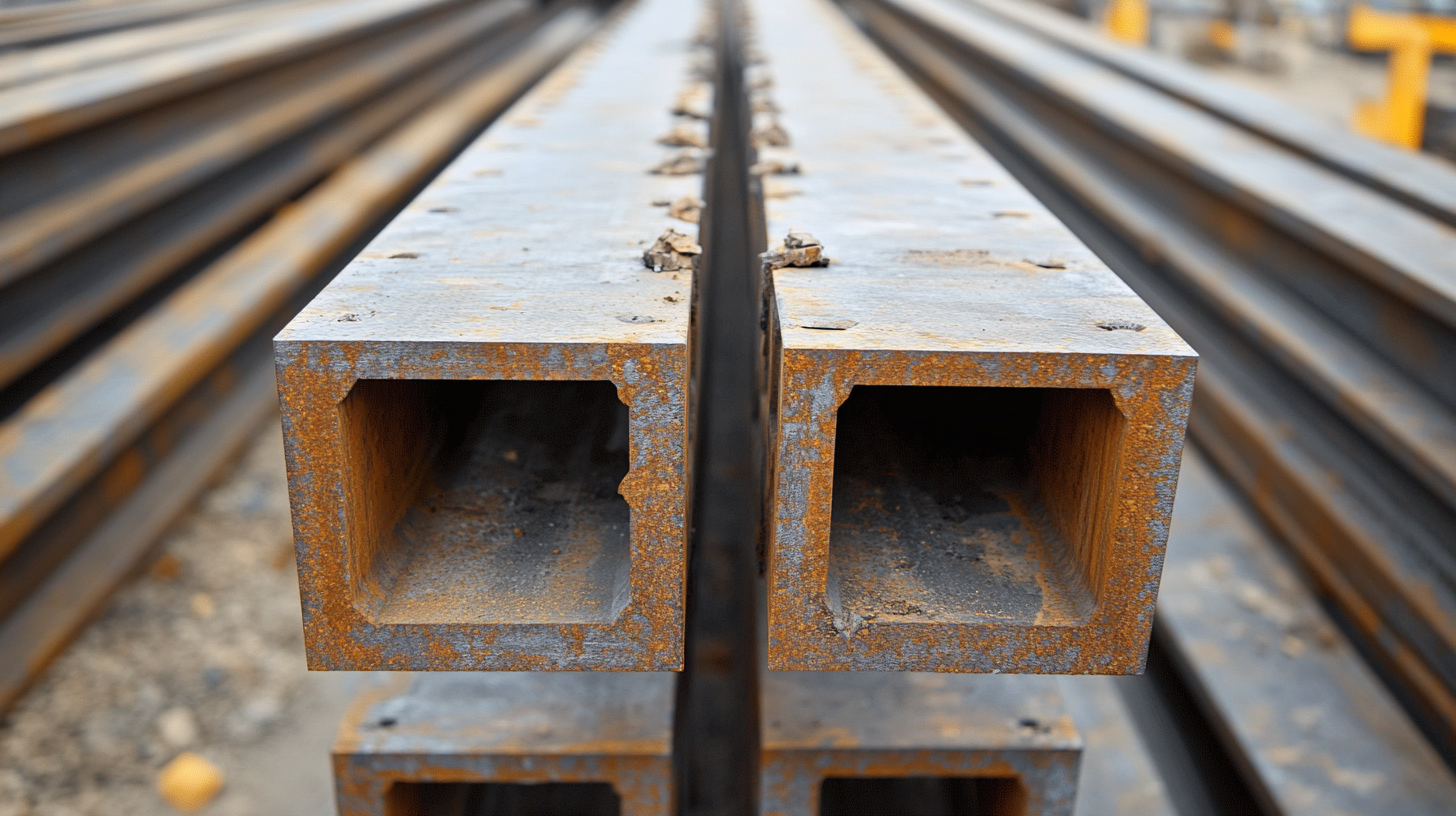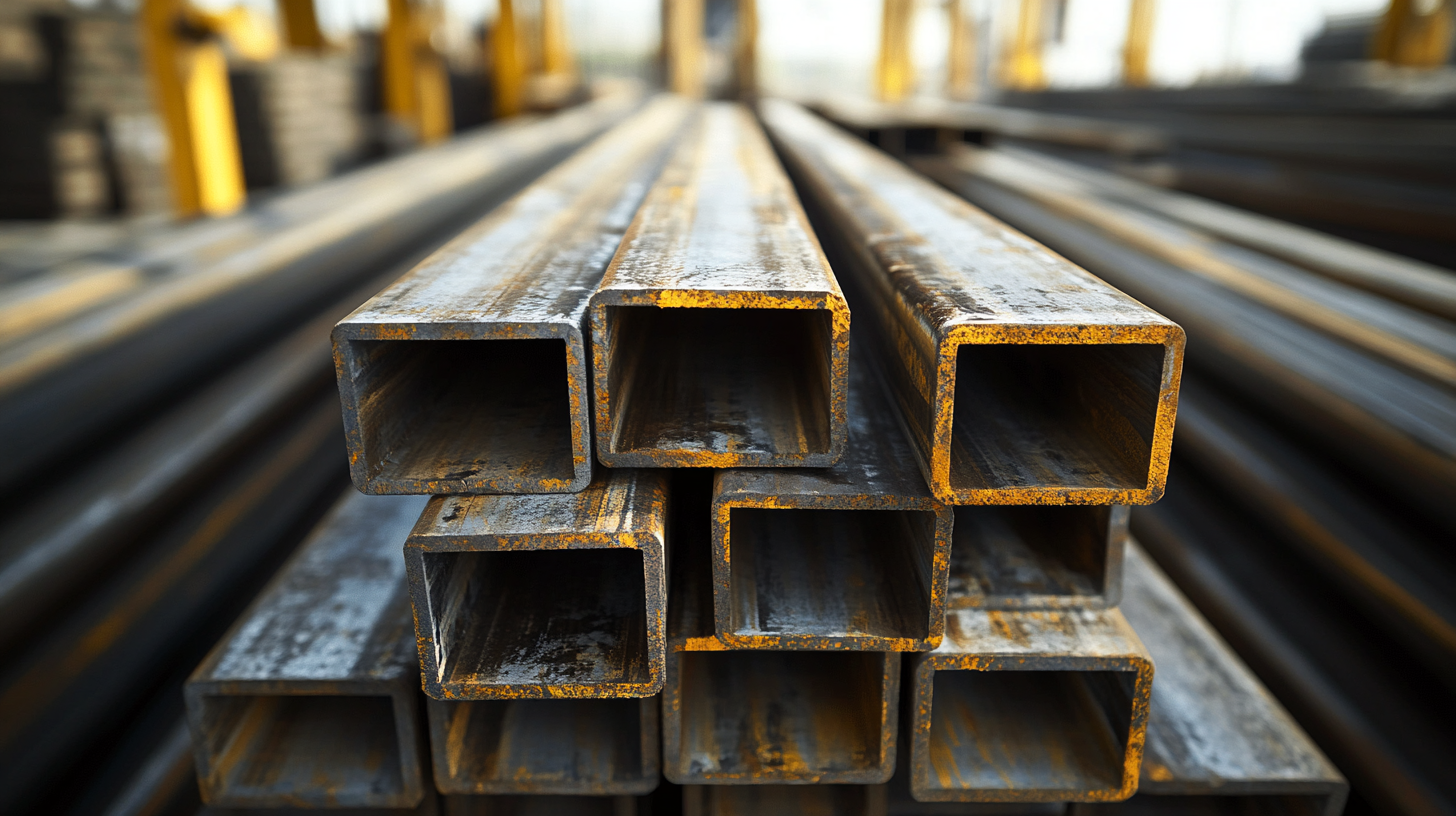In today's rapidly evolving global marketplace, organizations are increasingly recognizing the strategic advantages of sourcing materials that not only meet stringent quality standards but also enhance efficiency and sustainability. A recent report from the International Federation of Robotics highlights that the global robotics market in industrial settings has grown by 172% over the last five years, with steel fabrication being a crucial component for enhancing automation and precision in manufacturing processes. This underscores the value of adopting steel fabrication not only for its durability but also for the technological advancements it supports in production lines worldwide.
As companies navigate the complexities of global sourcing, the benefits of choosing steel fabrication are more pronounced than ever. According to a study by Research and Markets, the steel fabrication market is projected to reach $218 billion by 2025, driven by increasing demand in construction, automotive, and aerospace sectors. This surge emphasizes steel fabrication's integral role in facilitating robust supply chains and achieving cost-effective solutions. In this blog, we will explore five surprising benefits of steel fabrication, demonstrating why it should be a go-to choice for businesses aiming to optimize their global sourcing strategies.

When it comes to global sourcing, the choice of material can significantly impact product quality, performance, and overall costs. Among the plethora of options available, steel stands out as a superior choice due to its unique strength and durability. According to a report by the World Steel Association, the global steel market was valued at approximately $900 billion in 2021, and its extensive use across multiple industries underscores its unmatched performance.
One of the key advantages of steel fabrication is its exceptional strength-to-weight ratio. Steel structures demonstrate extraordinary load-bearing capabilities, which make them ideal for a variety of applications, from automotive components to large-scale construction projects. The American Institute of Steel Construction noted that steel can handle much greater tensile and compressive forces than other common materials, such as wood or aluminum, which often results in longer-lasting and safer infrastructures.
Moreover, steel’s durability is further enhanced by its resistance to corrosion when appropriately treated. A study conducted by the International Stainless Steel Forum revealed that stainless steel, for instance, can last more than 100 years when used in demanding environments, greatly reducing the need for replacements and maintenance. This endurance not only translates into cost savings over time but also aligns with sustainable practices by minimizing waste in manufacturing processes. As industries place increasing emphasis on sustainability, opting for steel in global sourcing can be a strategic move that meets both performance and environmental standards.

When it comes to global sourcing, businesses are continually searching for ways to optimize costs while maintaining quality. One often-overlooked solution is steel fabrication, which offers remarkable cost-effectiveness. By choosing steel as a primary material, companies can significantly reduce production expenses and ensure durability. Unlike other materials that may require frequent replacements or repairs, steel boasts a long lifespan, allowing businesses to save on maintenance and replacement costs in the long run.
Additionally, steel fabrication processes benefit from advanced technologies that enhance productivity and efficiency. Automated cutting, welding, and finishing techniques streamline production, leading to faster turnaround times and reduced labor costs. This efficiency not only minimizes the investment necessary for each project but also enables businesses to respond swiftly to market demands, giving them a competitive edge.
Furthermore, the versatility of steel means it can be tailored to various applications, thereby eliminating the need for multiple suppliers and reducing overall sourcing complexity. With a consolidated supply chain, companies can enjoy bulk purchasing discounts and lower transportation costs. This streamlined approach to sourcing allows businesses to allocate resources more effectively, ultimately driving down overhead expenses and maximizing profit margins.
| Benefit | Description | Cost Savings | Additional Notes |
|---|---|---|---|
| Durability | Steel fabrication offers products that withstand harsh environments, reducing maintenance costs. | Significant long-term savings due to fewer replacements. | Ideal for construction and heavy industries. |
| Versatility | Can be used for a wide range of applications, allowing for customization based on needs. | Reduces the need to source multiple materials. | Streamlines sourcing processes. |
| Efficiency | Modern steel fabrication techniques lead to faster production times. | Lower labor costs due to quicker project completion. | Increases overall productivity. |
| Sustainability | Steel is recyclable, making it an environmentally friendly option. | Costs saved on disposal and raw material sourcing. | Appeals to eco-conscious consumers. |
| Global Reach | Diverse suppliers around the world can provide competitive pricing and services. | Increased bargaining power for lower costs. | Allows for better supply chain management. |
The steel industry plays a pivotal role in sustainable construction, contributing significantly to global emissions. In fact, the production of nearly 2 billion tons of steel annually is responsible for approximately 7% of human greenhouse gas emissions. As the world shifts towards greener practices, choosing sustainable steel fabrication for global sourcing needs is becoming increasingly essential. The rise of "green steel," produced through innovative methods such as hydrogen-based processes, offers a pathway to dramatically reduce the carbon footprint associated with traditional steel production.
One compelling case is the transformation potential in Ukraine’s post-war recovery, where developing a robust green steel sector could invigorate the economy and strengthen supply chain links. The ecological emergy method applied in a case study of a Chinese steel company highlights the importance of sustainable production techniques in assessing the environmental impact of steel manufacturing. By adopting these practices, the industry can not only mitigate its emissions but also fulfill growing demands for sustainability among consumers and regulators alike.
Moreover, decarbonizing steel production is crucial for achieving climate targets. The industry's shift to low-emission technologies not only aids in the battle against climate change but also aligns with global trends toward eco-friendly materials. This sustainable transition can ensure that steel remains an indispensable and environmentally responsible raw material for the future, reinforcing its value across multiple sectors, including construction and transportation.

When it comes to steel fabrication for global sourcing, one of the standout advantages is the incredible customization potential it offers. Businesses across various industries often face unique challenges that require specialized solutions. Steel fabrication allows companies to tailor their products according to specific requirements, from design preferences to functional specifications. This level of customization ensures that organizations are not just receiving one-size-fits-all solutions but instead are getting materials and components designed explicitly for their operational needs.
Moreover, the flexibility inherent in steel fabrication means that changes can be made at virtually any stage of the production process. Whether it's adjusting dimensions, modifying shapes, or incorporating new technologies, manufacturers can swiftly respond to evolving project demands. This adaptability is a significant benefit for companies operating in fast-paced markets where innovation is key to maintaining a competitive edge. With steel fabrication, businesses can enhance their operational efficiency while achieving the exact specifications necessary to achieve their goals.
Additionally, the customization potential extends beyond mere dimensions and shapes. It includes selecting finishes, treatments, and coatings that enhance corrosion resistance, improve aesthetics, or provide additional functionality. Such versatility not only meets the diverse requirements of clients but also opens up new avenues for creative design and engineering. By leveraging the customization capabilities of steel fabrication, companies can ensure that their sourcing needs are not only met but exceeded, resulting in solutions that drive productivity and foster growth.
This pie chart illustrates the distribution of the surprising benefits associated with steel fabrication for global sourcing. Each segment highlights a unique advantage that contributes to its popularity in various industries.
In today’s fast-paced global economy, businesses are increasingly recognizing the importance of efficient supply chains. Steel fabrication solutions have emerged as a pivotal factor in this transformation. According to a report by the World Steel Association, the global steel market is projected to reach 2 billion metric tons by 2025, highlighting the rising significance of steel as a foundational component in various industries. By choosing steel fabrication for global sourcing needs, companies can streamline production processes, reduce lead times, and enhance overall operational efficiency.
Steel fabrication not only offers durability and strength but also improves logistics and cost-effectiveness. A survey by Deloitte reported that 79% of executives consider supply chain optimization as critical to their business success. When companies opt for local steel fabrication, they reduce transportation costs and minimize risks associated with long-distance sourcing. This localized approach not only speeds up delivery times but also allows for better quality control, ensuring that products meet industry specifications.
Furthermore, steel fabrication provides the flexibility to adapt to fluctuating market demands. As industries increasingly leverage Just-In-Time (JIT) manufacturing practices, the ability to quickly modify designs and produce components on short notice is invaluable. Research from McKinsey suggests that companies that implement advanced fabrication techniques can achieve up to a 30% reduction in production times, further emphasizing the role of steel in creating resilient supply chains. Embracing steel fabrication not only supports efficiency but positions businesses to thrive in a competitive environment.




